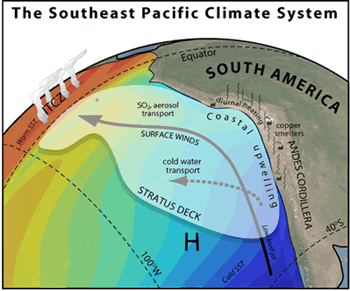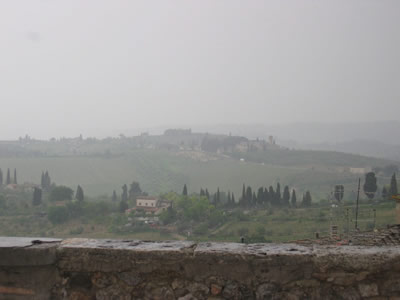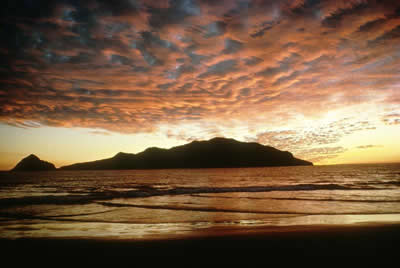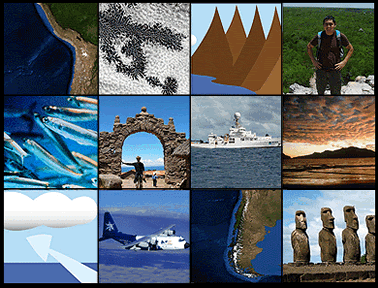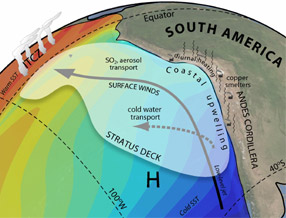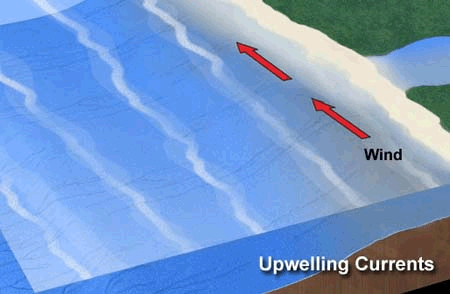Click on image for full size
Robert Wood (University of Washington) and the VOCALS Scientific Working Group
Southeast Pacific Climate
There are several regions in the world where low-lying stratus and stratocumulus clouds are frequently present and an important part of climates. It turns out that these regions also play an important role in Earth's global climate. Examples include the subtropical climates off of the coasts of California (US), Namibia (Africa), and Peru and Chile in South America. The climates of these regions involve interactions and feedbacks between the ocean, clouds, atmosphere, and land. Scientists in the VOCALS field campaign are focusing their experiments in the Southeast Pacific (SEP) Ocean off the coasts of Chile and Peru. They have chosen this area because the feedbacks in the regional climate systems are the clearest.
The climate of the SEP is dependent upon interactions between the Andes Mountains, the upper layer of the ocean, and the lower troposphere. In the SEP, clouds form right above the ocean in an area known as the marine boundary layer or MBL. MBL clouds are of the low stratus type. They create continuous cover over extended regions of the SEP. Precipitation from MBL clouds is mostly in the form of drizzle. It is likely that the amount of drizzle influences the structure and dynamics of SEP cloudiness.
Westerly winds blow thousands of miles across the Pacific Ocean toward South America. The winds are forced to turn north along the coast when they encounter the Andes Mountains range. Evaporative cooling occurs as the winds sweep across the water. The winds in this region cause the water at the ocean surface to move perpindicular to the coastlaine (westward) in a process known as the Ekman transport. The displaced surface water is replaced by colder, nutrient-rich ocean water rising from the deep ocean. The process of upwelling in the SEP is associated with the Humboldt Current system. These cold waters, aided by an air mass, made stable in part by effects of the Andes, help support the largest and most persistent subtropical sheet of stratus and stratocumulus clouds on the planet. This cloud deck, affected by aerosols from both natural and human sources, helps in turn to maintain cool ocean waters beneath.
Limited measurements, model results, and satellite observations indicate that the atmosphere over most of the SEP is very clean. However, copper smelters located in Chile and Peru produce pollutants which become aerosols in the atmosphere. Aerosols are also present naturally in this area from sea salt and plankton. Aerosols are known to affect the formation of clouds and precipitation. If the aerosol concentration is high enough, it is thought the amount of drizzle produced by the MBL clouds could be suppressed. Therefore, VOCALS scientists will test hypotheses about the relationship between aerosols, atmospheric processes in clouds, and precipitation.


